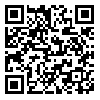Volume 10, Issue 3 (fall 2006)
jwss 2006, 10(3): 349-359 |
Back to browse issues page
Download citation:
BibTeX | RIS | EndNote | Medlars | ProCite | Reference Manager | RefWorks
Send citation to:



BibTeX | RIS | EndNote | Medlars | ProCite | Reference Manager | RefWorks
Send citation to:
M. Falahati-Anbaran, A. A. Habashi, M. Esfahany, S. A. Mohammadi, B. Ghareyazie. Study of Genetic Diversity and Relationships of Diploid and Tetraploid Annual Medics Using Microsatellite Markers. jwss 2006; 10 (3) :349-359
URL: http://jstnar.iut.ac.ir/article-1-589-en.html
URL: http://jstnar.iut.ac.ir/article-1-589-en.html
Abstract: (23885 Views)
Annual medics are used for hey production, soil protection, biological fixation of N2 and green manure. In the present study, the inter and intra specific genetic diversity and relatedness of 4 diploid and two tetraploid (M. rugosa and M. scutellata) annual medics were evaluated using microsatellite markers. PCR analysis was performed on genomic DNA from individual plant and PCR products were detected using standard polyacrylamide sequencing gel. Totally twenty five polymorphic alleles were observed in the studied species. Average intra-specific genetic diversity ranged from zero (0.0) in both M. rugosa and M. scutellata to 0.114 in M. minima species, and the level of genetic diversity was similar in both M. orbicularis and M. truncatula species. Analysis of molecular variance (AMOVA) was used to partition the overall genetic diversity into within and among species, and between diploids and tetraploids. The results revealed significant (P<0.05) inter and intra-specific genetic variation. Pairwise comparisons based on Fst indicated significant differences among all of the species. Clustering analysis using UPGMA algorithm based on coancestary coefficient revealed a clear genetic relationship among species. The hypothesis on a common origin of two tetraploid species was supported by UPGMA clustering and phylogenetic analysis. The high level of Genetic diversity in spiny pod species respect to spineless pod species suggested the high importance of species with spiny pods in annual medics evolution. The findings support the usefulness of microsatellite markers for assessing inter and intra specific genetic diversity, differentiation and genetic relationships.
Keywords: Annual medics ( Medicago spp.), Genetic diversity, Microsatellite markers, Analysis of molecular variance (AMOVA).
| Rights and permissions | |
 |
This work is licensed under a Creative Commons Attribution-NonCommercial 4.0 International License. |





